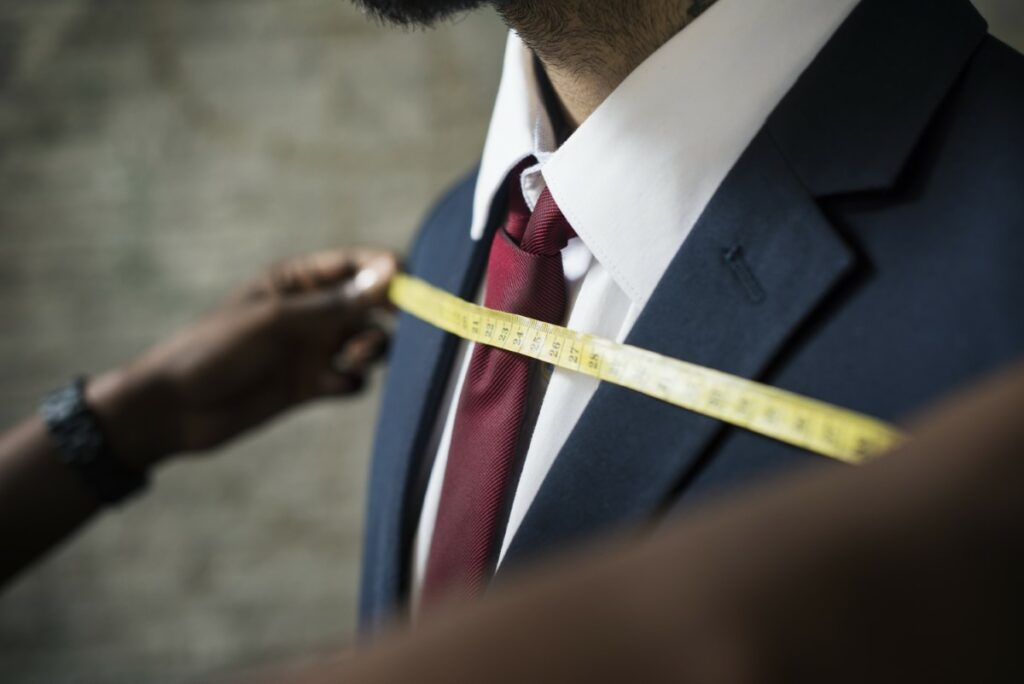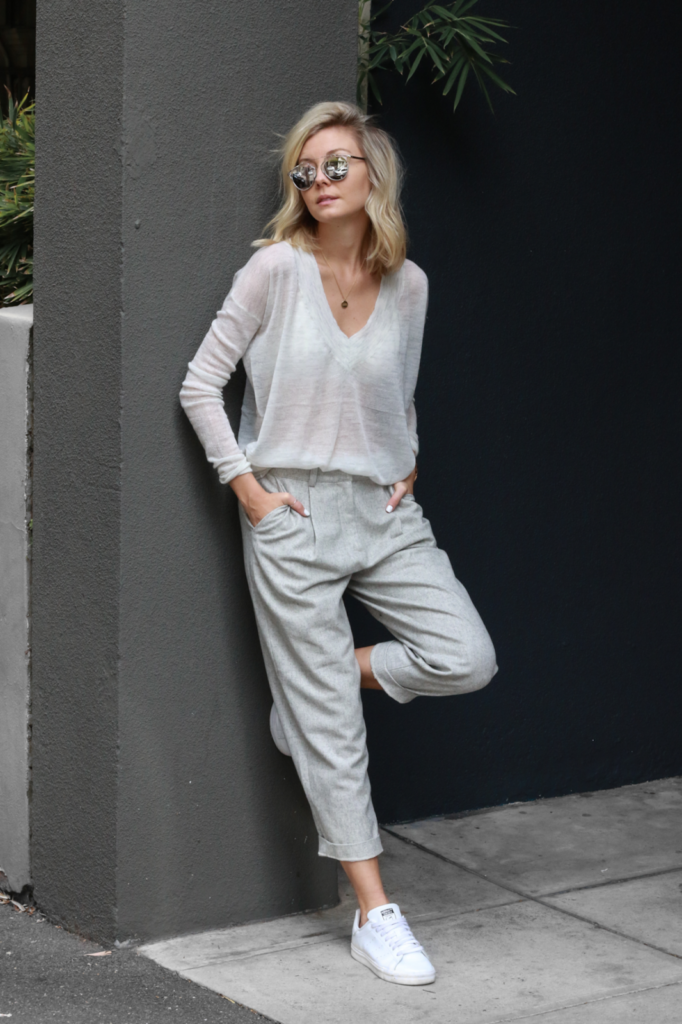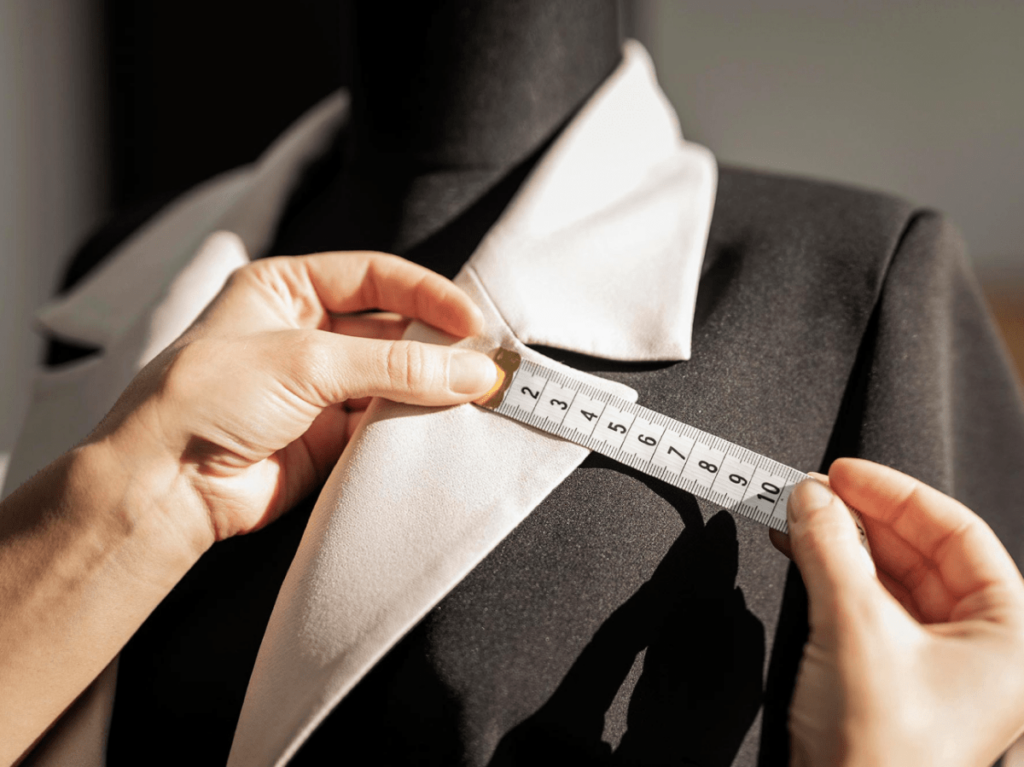
In the realm of fashion, achieving the perfect fit is paramount. The way clothes fit on your body can affect how comfortable, confident, and stylish you feel. This applies to suits, shirts, and sweaters alike.
Comfort: The shoulder-to-shoulder fit directly impacts how comfortable a garment feels when worn. Among the many body measurements that ensure a well-fitted garment, one crucial yet often overlooked dimension is the shoulder-to-shoulder fit, which is essential in pattern-making. Accurate body measurements ensure that the garment fits perfectly where the shoulder meets the sleeve, providing both comfort and style.
Shoulder width is the measurement that shows how far apart your shoulders are. It’s not just about measuring from one shoulder to the other; it’s really important for how well clothes fit and feel. This measurement affects everything from how a jacket drapes to how comfortable a shirt is.
This guide will teach you how to measure shoulder width accurately. It will also explain why this measurement is important.
Additionally, it will discuss common problems people face when measuring shoulder width. Finally, it will provide tips on adjusting shoulder points to ensure that clothes fit well. This will help you get the perfect fit and make sure your clothes look and feel great.
Understanding Shoulder Width
Before we dive into how to measure shoulder width accurately, it’s important to understand why this measurement is so crucial for how clothes are made and how they fit. The shoulder width measurement is a key part of designing any garment. When shoulders are measured and fitted correctly, they help create the right shape for the upper body. This means the garment will hang properly, move with you comfortably, and look good.
Getting the shoulder seams of a garment to match the width of your shoulders is incredibly important for achieving a well-balanced and polished look. When the shoulder seams are aligned correctly with your natural shoulder width, the garment fits seamlessly and complements the shape of your body. This alignment allows the fabric to drape elegantly over your shoulders, enhancing the overall appearance of the outfit and contributing to a sophisticated, refined look.
However, if the shoulder width is not measured or fitted properly, it can lead to several issues. For instance, if the seams are too wide or too narrow, it can cause the fabric to pull awkwardly, creating an unflattering appearance. This misalignment can also restrict your movement, making the garment less comfortable to wear. An ill-fitting shoulder width can also disrupt the garment’s silhouette, leading to an overall appearance that lacks harmony and style.
Therefore, achieving the exact shoulder seam width measurement is crucial. It ensures that the garment maintains a balanced and stylish look while also providing the comfort and ease of movement you need. Properly fitted shoulder seams contribute significantly to the overall fit and feel of your clothing, making sure that both style and comfort are optimally balanced.
Why It Matters
- Comfort: The shoulder-to-shoulder fit directly impacts how comfortable a garment feels when worn. If the measurement is too narrow, it can constrict your movements and cause discomfort. Conversely, if it’s too wide, the garment may slip off your shoulders, leading to constant readjustment.

- Fit: Achieving the right shoulder-to-shoulder fit is crucial for a garment to drape properly on your body. A well-fitted shoulder ensures that the rest of the garment hangs correctly, enhancing your overall appearance. It prevents unsightly wrinkles or bulges that can occur when the shoulders are ill-fitted.
- Posture: Proper shoulder-to-shoulder fit contributes to better posture. When clothing fits correctly across the shoulders, it encourages you to stand tall and straight, exuding confidence and poise. On the other hand, poorly fitting shoulders can cause slouching and discomfort, detracting from your posture.
How to Measure Shoulder Width
Measuring front shoulder width accurately requires precision and attention to detail. While it may seem straightforward, there are specific steps to follow to ensure an accurate measurement of front shoulder width. Here’s a step-by-step guide:
Step 1: Prepare
Before taking measurements, ensure you have the following tools:
- A flexible tape measure
- A mirror or someone to assist you (optional but helpful)
Step 2: Stand Naturally
Stand in a relaxed posture with your shoulders relaxed and arms naturally your arms hanging comfortably by your sides. Make sure you do not hunch your shoulders forward or pull them back, as this can affect the accuracy of the measurement.

Step 3: Locate the Acromion Points
Identify the bony protrusions at the top of each front shoulder blade. These points, known as the acromion points, serve as reference points for measuring the front shoulder point and width.
Step 4: Measure
Using the flexible tape measure, place the tape measure straight with one end at the left acromion point. Extend one shoulder seam and the tape measure horizontally across your back, ensuring it remains parallel to the ground. Align the other end of the tape measure with the right acromion point (edge of the other shoulder).
Step 5: Record the Measurement
Once the tape measure is in position, take note of the measurement in inches or centimetres. Ensure the tape measure is not pulled too tightly roughly in the same area or allowed to sag, as this can result in an inaccurate measurement.
Step 6: Repeat for Accuracy
For added precision, it’s advisable to take multiple measurements and calculate the average. This helps account for any variations in posture or measurement technique.
Common Mistakes to Avoid
While measuring shoulder width, several common mistakes can lead to inaccurate results. Awareness of these pitfalls can help ensure a more precise measurement. Here are some common mistakes to avoid:
Mistake 1: Incorrect Posture
Standing with hunched shoulders or arms raised can distort the natural shoulder line, resulting in an inaccurate measurement opposite shoulder point. It’s essential to maintain a relaxed and upright posture throughout the measurement process other shoulder down.
Mistake 2: Improper Tape Placement
Ensure the outside edge of the tape measure runs straight across the front shoulder points to the back at the level of the acromion points. Deviating from this alignment can skew the measurement and lead to an ill-fitting garment.
Mistake 3: Pulling the Tape Too Tightly
Avoid pulling the tape measure too tightly against the body, as this can compress the shoulders and yield a smaller measurement back shoulder point than the actual shoulder width. The measuring tape should be snug but not constricting. Try not to stretch the measuring tape, which can also cause mistakes.
Mistake 4: Inconsistent Measurements
To account for variations in posture and measurement technique, it’s advisable to take multiple measurements at one shoulder point and calculate the average. This helps ensure greater accuracy in determining average shoulder width.

Interpreting Shoulder Measurements
Once you make your measure shoulder width, it’s essential to understand how it relates to garment sizing and fit. Here’s how to interpret your shoulder width essentially measures a point measurement:
Narrow Shoulders
If your true shoulder width or measurement is smaller than average, you may have narrow shoulders. In this case, opt for garments with narrower shoulder constructions to prevent excess fabric and a droopy appearance. Additionally, consider styles with padded shoulders to create the illusion of broader shoulders.
Broad Shoulders
Conversely, if your shoulder width is larger than average, you likely have broad shoulders. Look for garments designed with extra room across the shoulders to accommodate your broader frame. Avoid styles with narrow shoulder constructions, as they may feel constricting and uncomfortable.
Standard Shoulders
If your shoulder width is on the higher end of the average range, most standard-sized clothes should generally fit you well without needing major adjustments. However, it’s still important to try on the clothes and check the fit for yourself.
Different brands and clothing makers may have slightly different shoulder width measurements. This can impact how well the garment fits your shoulders. So, even if you fall within the average range, it’s always a good idea to try on garments to ensure they fit comfortably and look good.
Tailoring for a Perfect Shoulder-to-Shoulder Fit
In some instances, off-the-rack garments may not align perfectly with your shoulder width. Fortunately, this is where the expertise of a skilled tailor comes into play. A tailor can make precise adjustments to sleeve length shoulder seams, and other shoulder point ensuring a custom fit that enhances both comfort and style.
When working with a tailor, communicate your specific fitting preferences and any concerns regarding the standard shoulder width measurements. A skilled tailor will take precise measurements and make adjustments accordingly, resulting in a garment that fits like a glove.
Finding the Right Shoulder-to-Shoulder Fit
When buying clothes, make sure the shoulders fit well for comfort and style. Pay attention to the back-to-shoulder fit. Here are some tips for finding the first shirt that fits well right fit:
- Try Before You Buy: Always try on garments before making a purchase. Pay attention to how the shoulders fit and move with your body. If you notice any tightness or restriction, consider trying a different size or style.
- Consult Size Charts: Refer to size charts provided by clothing brands to determine which size is best for you. Keep in mind that sizes can vary between brands, so it’s essential to check the specific measurements for each garment.
- Consider Alterations: If you find a garment you love but the shoulders don’t quite fit right, consider having it altered by a professional tailor. They can make adjustments to ensure a perfect fit that flatters your body.
Conclusion
Shoulder width is a cornerstone in garment fitting, influencing how clothes drape and conform to the body. By mastering the art of measuring shoulder width accurately, you can elevate your wardrobe with well-fitted attire that exudes confidence and style.
Whether you’re shopping for a new suit, jacket, or dress shirt now, remember that attention to detail, particularly in shoulder measurements, can make all the difference in achieving a polished and refined proper cloth look. So, stand tall, measure carefully, and embrace the transformative power of a perfectly fitting garment – shoulder and back shoulder width.





Leave a Reply